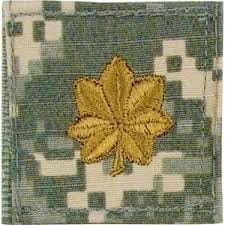Improv Tip Week #9-Targeting Using Dominant Pentatonic
Welcome to week #9 where we’ll be finalizing the last of our “Pentatonic Series.” There’s obviously many more types of pentatonic scales that are out there that you can use these targeting concepts with, but I have some other topics that I want to get out to you. This week’s pentatonic scale, much like some of our other exotic pentatonics, probably has a few different names that you may have heard. However, for this blog’s purposes…I’m calling it the Dominant Pentatonic scale. This scale (along with a number of others) is very recognizable if you’ve spent any time listening to guitarist, John McLaughlin. Unlike some of the other pentatonics we’ve discussed, this particular pentatonic employs the 4th scale degree as well as the flat 7th (hence the name dominant pentatonic). It has a very distinct sound because of the half step in the middle of the scale between the 3rd and 4th scale degrees. The dominant pentatonic is constructed of the root, 3rd, 4th, 5th and flat 7th scale degrees (see example below).

While I’m sure you can find ways to make the dominant pentatonic scale to work over various modes (see previous tips), I’ve found that for me-this scale works best with dominant (or dominant related) chords. The first example below uses the G-dominant pentatonic scale over the G7 chord in the second bar. Notice (like in practically all examples over the past 9 weeks), that the G-dominant pentatonic scale is used to target the “G” of the Cmaj7 chord in the 3rd bar. One of the reasons why I like this particular pentatonic scale is because of the half-step motion built into the scale. Music and great improvisations have tension and release of varying degrees. The dominant pentatonic scale has an interesting and exotic sound because of the tension and release found within the scale itself. When you use it as a tool along with targeting principles-you will find that your lines begin to communicate with your audience.

The above example is a very practical use of the dominant pentatonic scale. However, you can use dominant pentatonic scales that aren’t based on the root of the chord of the moment. In the example below, I use the C-dominant pentatonic scale over the G7(#9) chord because the half-step motion in the scale flows nicely from the G7(#9) chord into the Cmaj7 chord.

Both of the examples I’ve used today would be considered “inside.” All of the pentatonic examples we’ve talked about the past couple of weeks can be used to go “outside” of the harmony as well. One way to do that is to take the pentatonic scale you would use and play it 1/2 step up or down from the root. Always remember, though, you can’t be “outside” without defining “inside.” My general rule for playing “outside” of the harmony is to always start “inside,” go “outside” and then come back in. It can be used to great effect, but is very easily overdone.
I hope you’ve enjoyed this week’s tip and the past “Pentatonic Series.” I always look forward to hearing from all of you so please feel free to leave your comments and share this tip (and blog) to others via Facebook, Twitter, Google+, LinkedIn, etc.
I would also love to give you a FREE MP3 from my first album, Mountain, Move. Simply fill out the short form after clicking the image below!







